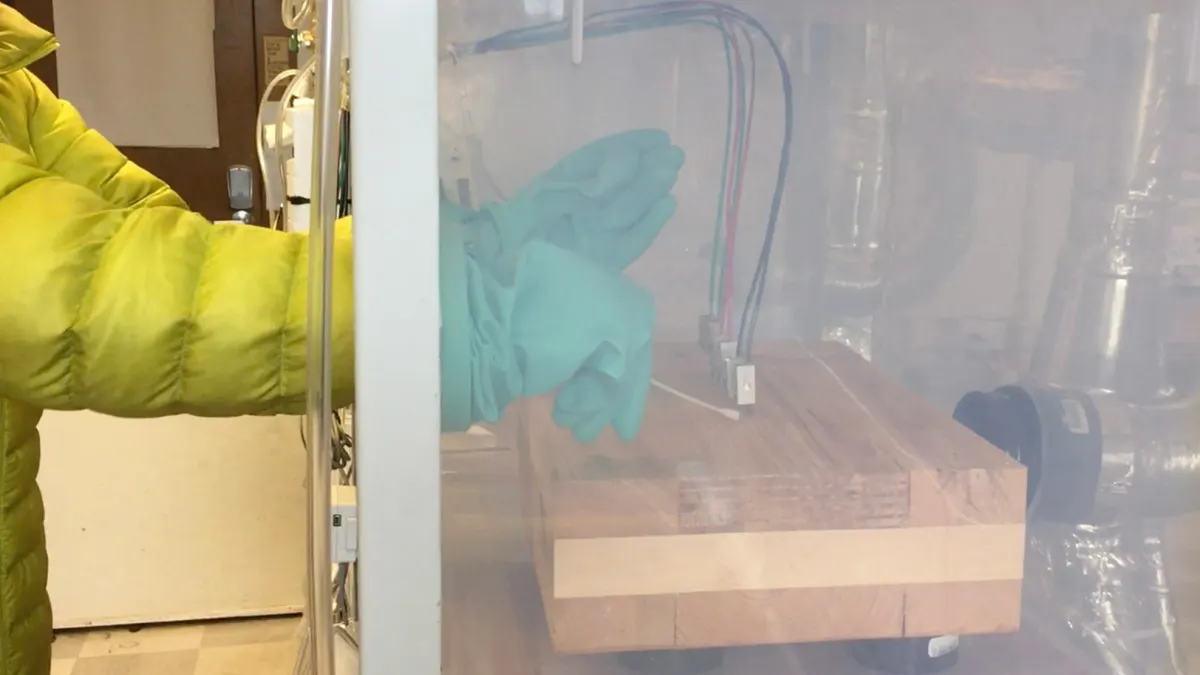Dive Brief:
- Mass timber may have antimicrobial benefits that could make it useful for hospital construction, according to a recent study from the University of Oregon.
- The research team found that when wood was exposed to a brief wetting, it tested lower for levels of bacterial abundance than an empty plastic enclosure used as a control.
- “People generally think of wood as unhygienic in a medical setting,” said Mark Fretz, assistant professor, co-director of the University of Oregon’s Institute for Health in the Built Environment and principal investigator for the study. “But wood actually transfers microbes at a lower rate than other less porous materials such as stainless steel.”
Dive Insight:
The experiments are the first to explore relationships between microbial communities on the surfaces of cross-laminated timber, a key mass timber component, and the emission of volatile organic compounds under dry and wetted conditions, said Gwynne Mhuireach, a University of Oregon research assistant professor, in the news release.
“We wanted to explore how mass timber would stand up to the everyday rigors of healthcare settings,” said Mhuireach in the release. “In hospitals and clinics, germs are always present and surfaces occasionally get wet.”
The study — which also incorporated researchers from Portland State University in Portland, Oregon, and the Salk Institute for Biological Studies in San Diego — sealed blocks of CLT in disinfected plastic boxes to create a microenvironment with carefully controlled temperature and humidity, according to the news release. To simulate a healthcare setting, air was filtered and exchanged at rates similar to hospital codes.
The team sprayed the blocks with tap water under three types of events — just once, every day for a week and daily over four weeks — and inoculated them with a cocktail of microbes commonly found in hospitals, according to the news release. They used an empty plastic box as control, and took samples over a four-month period.
The results of the study, which was supported by a Wood Innovations grant from the U.S. Department of Agriculture, indicated wood is effective at inhibiting bacteria and revealed clues about wetting that will inform future research and development, Mhuireach said in the news release.
Additionally, the empty plastic control box had greater viable microbial abundance than the wood samples, excluding the first 14 days after inoculation, per the news release.
Wood can release compounds called terpenes, many of which smell pleasant and inhibit microbial growth, per the release. Its ability to inhibit the spread of pathogens may also stem from pores that trap bacteria or antimicrobial chemical compounds that occur naturally, said Fretz.
The emissions of VOCs — chemicals that spread quickly in the air and are responsible for diverse odors — also plateaued after wetting, Mhuireach said, which the team interpreted as a slight increase compared to an overall downward trend.
Already, mass timber is being put to use on a hospital build in Canada. The new Prince Edward County Memorial Hospital in Picton, Ontario, will be North America’s first un-encapsulated mass timber hospital once it’s complete, according to a news release from Quinte Health, the hospital network of which PECMH is a part.
That example aside, exposed wood is rarely used in healthcare facilities, Fretz said, due in part to strict building codes that are slow to evolve. Another reason is widespread misperceptions about wood and pathogens, an aspect the researchers hope to change.














